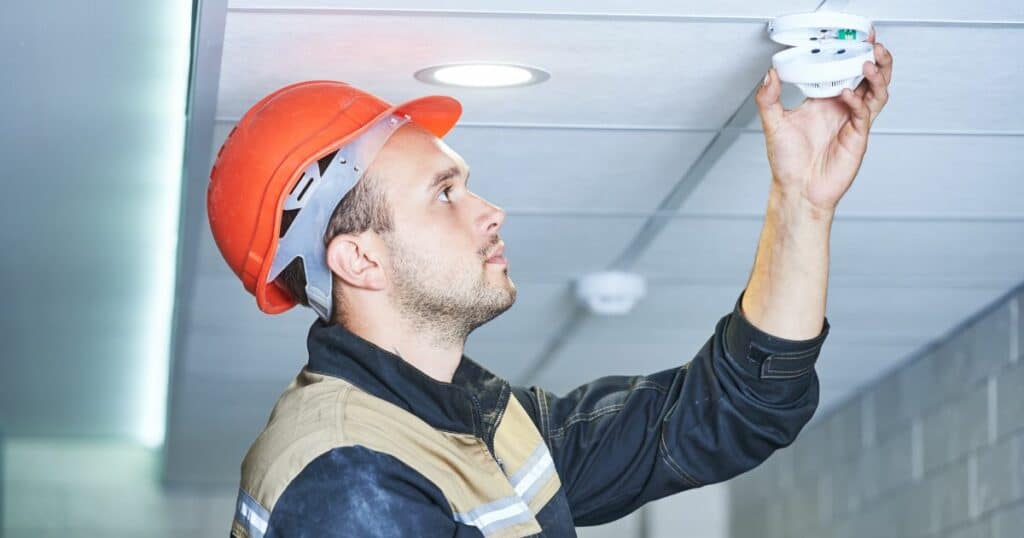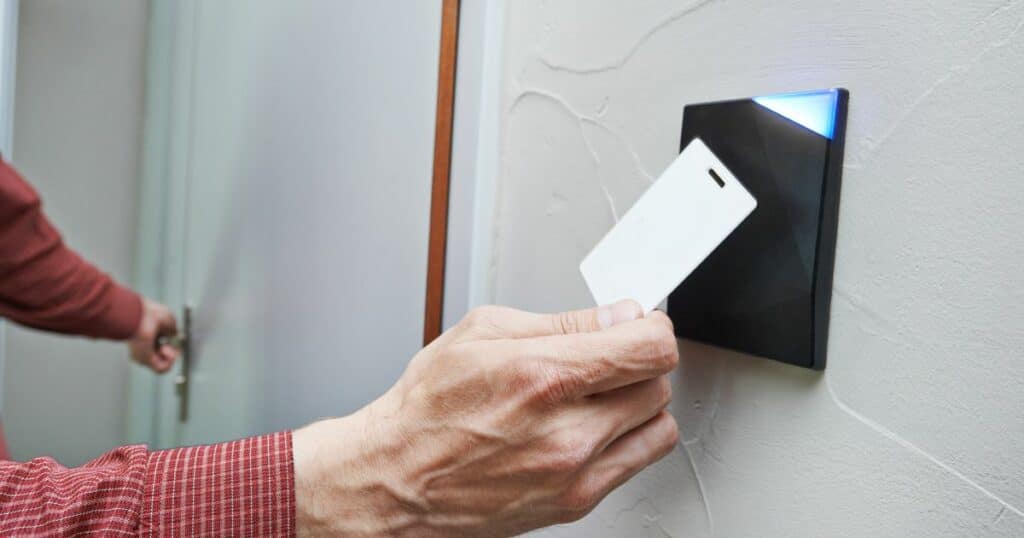In the intricate world of building design and construction, the term “low voltage systems” frequently surfaces, often surrounded by a bit of ambiguity.
What exactly are these systems, and why are they crucial in modern buildings?
In this article, we share the fundamentals of low voltage systems, and help you better understand their importance, components, and applications.
Understanding Low Voltage Systems
Low voltage systems refer to electrical systems that operate at a voltage level lower than the standard line voltage provided by the utility company. Typically, these systems operate at voltages ranging from 50 to 1000 volts.
While they may not pack the same punch as high voltage systems used in power distribution, they play a pivotal role in powering various applications within buildings, ensuring functionality, safety, and efficiency.

Components of Low Voltage Systems
Let’s take a closer look at the key components that constitute low voltage systems. These components form the backbone of modern building infrastructure, facilitating seamless communication, enhanced security, and efficient management of various building systems.
1. Structured Cabling
This forms the backbone of modern communication networks within buildings. It encompasses cabling infrastructure such as twisted pair cables, fiber optics, and connectors, facilitating data and voice communications, internet connectivity, and audiovisual systems.
2. Security and Access Control Systems
These systems safeguard buildings and their occupants by controlling access to different areas through mechanisms like key cards, biometric scanners, and surveillance cameras. They also encompass alarm systems that detect unauthorized entry, fire, or other emergencies, ensuring prompt response and mitigation.
3. Fire Alarm and Life Safety Systems
Vital for ensuring occupants’ safety, these systems detect and alert individuals in case of fire or other life-threatening emergencies. They may include smoke detectors, heat sensors, strobe lights, and audible alarms, integrated with building management systems for centralized monitoring and control.
4. Building Automation Systems
Designed to optimize energy usage and enhance user comfort, building automation systems are a great example of low voltage systems. For example, automated lighting control systems can regulate artificial lighting levels based on factors such as occupancy, daylight availability, and user preferences. By integrating sensors, actuators, and controllers, these systems optimize HVAC equipment operation, minimizing energy consumption while maintaining desired comfort levels.
It is important to note that while wireless apps (such as Lutron) that control lighting systems remotely are low voltage, the switches that control lighting systems are not.

Applications of Low Voltage Systems
The versatility of low voltage systems extends across various building types and industries, including:
- Commercial buildings
- Residential complexes
- Industrial facilities
- Healthcare institutions
- Educational institutions
- Hospitality establishments
Their applications range from basic necessities like fire alarms to advanced functionalities such as smart building automation, energy management, and remote monitoring.
In today’s digital era, low voltage systems serve as the nerve center of intelligent buildings, enabling connectivity, automation, and data-driven decision-making.
Importance of Professional Design and Integration
Given the critical role low voltage systems play in modern buildings, their design, installation, and integration require meticulous planning and expertise. MEP engineering firms such as VP Engineering specialize in conceptualizing, designing, and implementing tailored low voltage solutions aligned with clients’ needs and project requirements.
By leveraging their technical prowess and industry insights, these firms ensure optimal system performance, reliability, and compliance with regulatory standards.

Conclusion
Low voltage systems may operate discreetly within buildings, but their impact is profound and far-reaching. From enabling seamless communication and enhancing security to optimizing energy usage and ensuring occupant comfort, these systems are the unsung heroes of modern building infrastructure.
Understanding their components, applications, and the importance of professional design and integration is crucial for architects, developers, and building owners striving to create safe, efficient, and technologically advanced spaces.
In the dynamic landscape of building design and construction, embracing the potential of low voltage systems is not just a choice but a necessity for staying ahead in an increasingly interconnected world.
Choosing the Right Electrical Engineering Firm to Install Your Low Voltage System
Selecting the right electrical engineering firm requires careful consideration and due diligence. No matter what firm you select, the best partnerships emphasize open communication and collaboration for project success.
What truly sets VP Engineering apart is our unwavering commitment to customer service. Our excellence in communication and relentless dedication to offering actionable solutions distinguishes us from most other firms. At VP Engineering, we go beyond the stereotypical engineer by providing thoughtful solutions or alternative options for every challenge we encounter.
Our core values – honesty, integrity, respectfulness, responsiveness, and professionalism – form the foundation of our approach. We take pride in doing the right thing for our clients. Choose VP Engineering as your trusted partner, where commitment meets ingenuity, ensuring the success of your project from conception to completion.
Contact us today and experience the difference.

Suggested FAQs
Here are answers to some of the most frequent questions we receive regarding low voltage systems.
1. What are the types of low voltage systems?
Low voltage systems encompass structured cabling, security/access control, fire/life safety, and building automation—each contributing to the seamless functioning of modern buildings.
2. How does a low voltage system work?
Low voltage systems operate by harnessing reduced voltage levels to power various building applications, ensuring smooth functionality while prioritizing safety and energy efficiency.
3. What is a low voltage security system?
A low voltage security system utilizes lower voltage levels to energize surveillance cameras, access control devices, and alarm systems, providing robust protection for building occupants and assets.
4. What is LV and ELV?
LV, or Low Voltage, refers to systems operating below 1000V, while ELV (Extra Low Voltage) operates below 50V. ELV systems are not only safer but also often more versatile for intricate building applications.



